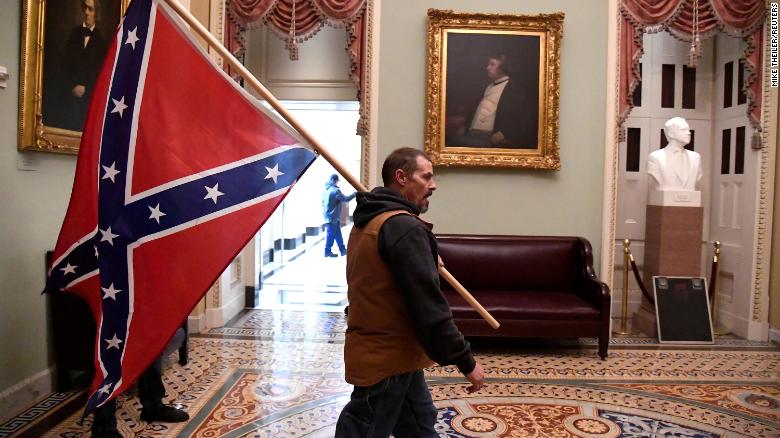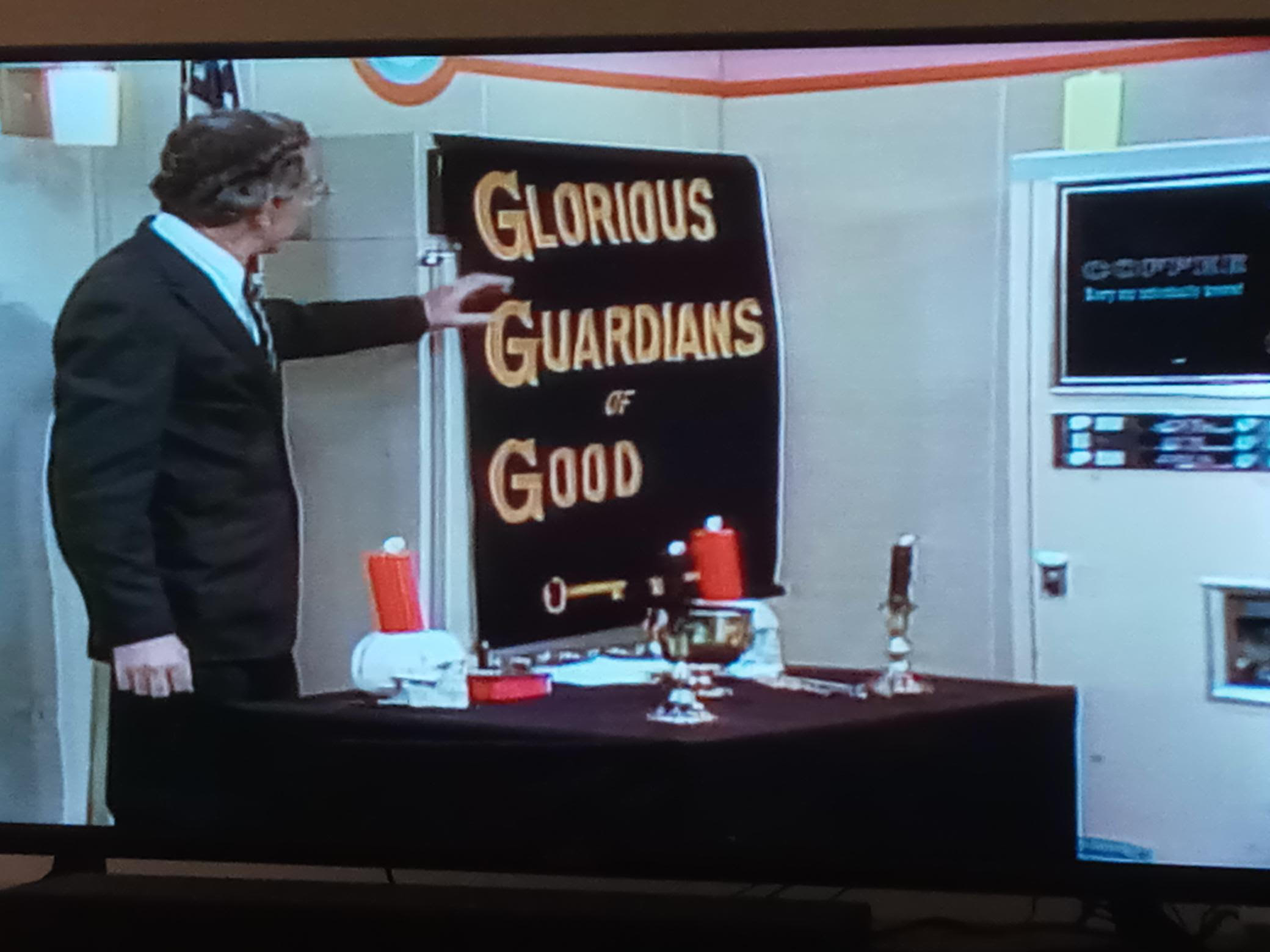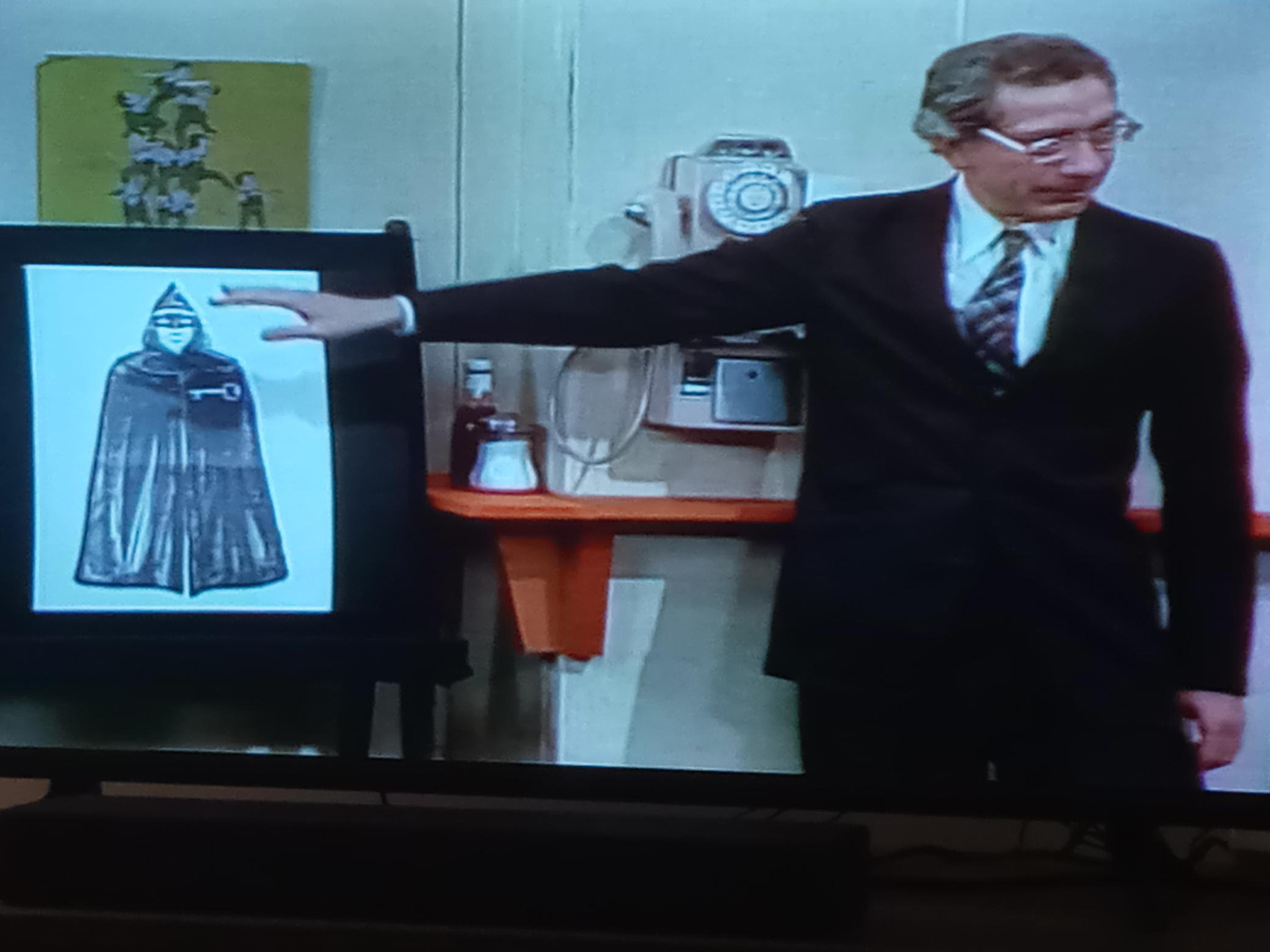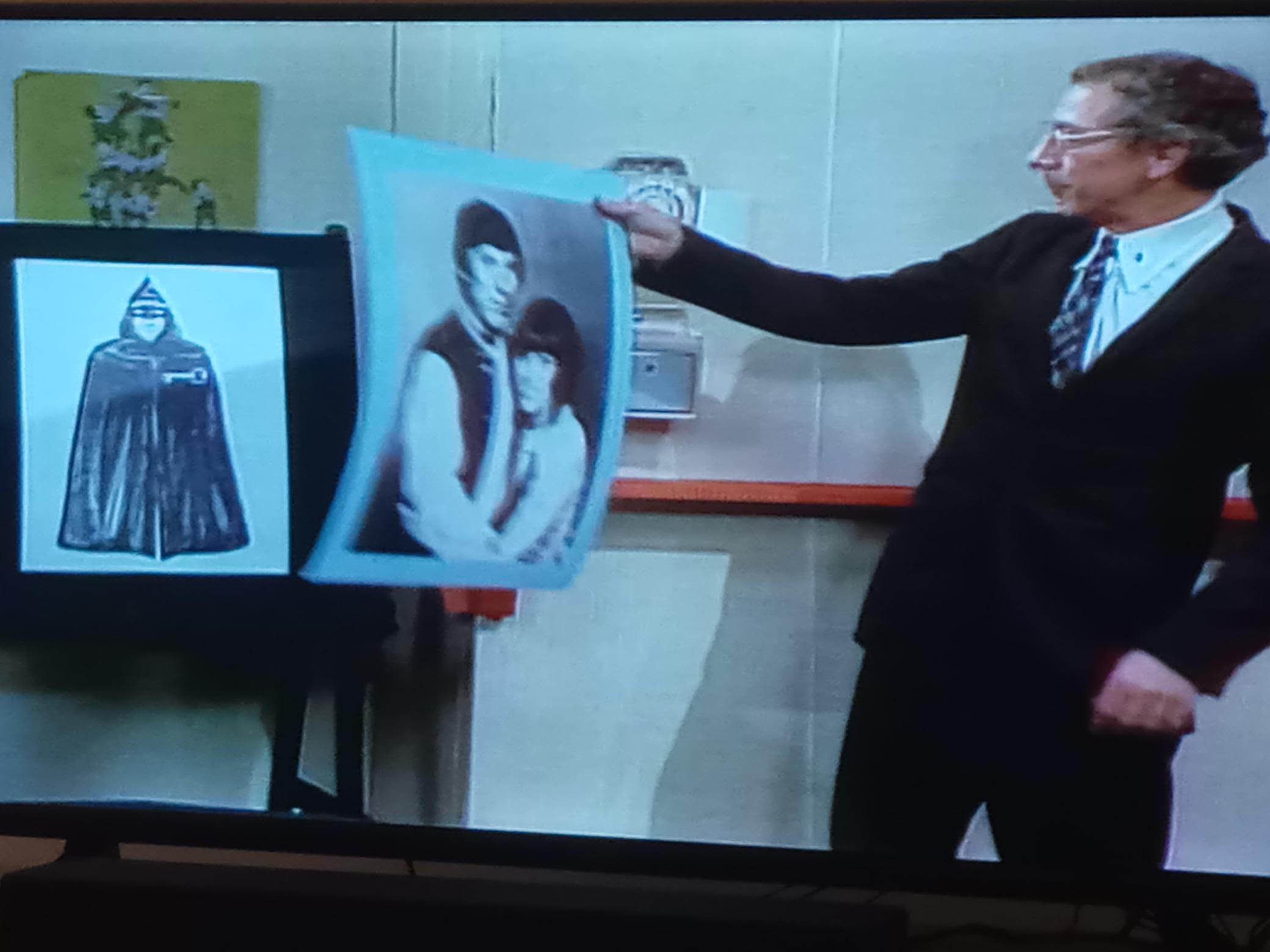Over*Flow: Whitelash in the Heartland: 1977 Speaks to Today through the Voice of Mary Hartman, Mary Hartman
Vincent L. Stephens / Boston University

“Fernwood is middle class. Fernwood is morality. Fernwood is America. Fernwood is GGG. As Fernwood goes so goes the nation,” Vernon Bales, Mary Hartman Mary Hartman
The February 2021 announcement that co-producers Jacob Tierney and Emily Hampshire are rebooting Norman Lear’s Mary Hartman, Mary Hartman (which fans refer to as MH2) has generated considerable press given the controversies associated with the original series which aired on syndicated television stations from January 5, 1976-July 1, 1977.[1] Most comedic reboots of the 2010-20s, such as Fuller House and Saved by the Bell, have adopted a meta perspective that rarely improves on the original. More acclaimed comedies, such as Murphy Brown, The Conners (formerly Roseanne), and Will & Grace, have also struggled to capture their original impact.
The MH2 reboot has a unique opportunity to transcend the nostalgic approaches common to most reboots and draw attention to the resurgence of white supremacy in the U.S. The ways white supremacists subtly constructed racial “others” as latent socioeconomic threats to the livelihood of white working class and middle-class people is a significant but overlooked storyline of MH2’s second season whose relevance endures. Among the militia members who stormed the U.S. Capitol building on January 6, 2021 were seemingly “regular” white people—business owners, teachers, police officers, parents—convinced they were combating a threat to their social status. MH2’s storyline depicts the susceptibility of this demographic to irrational fears of displacement.
MH2 has garnered scholarly attention for its hybrid of comedy, satire, and soap opera forms, and bold depiction of social issues including media saturation, domestic abuse, and consumer culture.[2] Oddly, scholars have rarely acknowledged how members of the white supremacist group the Glorious Guardians of the Good (GGG) gradually infiltrated MH2’s fictional Fernwood, Ohio community. Among its myriad storylines, which depicted topics as varied as impotence, the sexual closet, and religious fanaticism, its savvy approach to depicting “whitelash” is the most relevant and politically urgent theme for today’s viewing audience.[3] Hewitt (2005) defines white backlash as
“Negative reactions within white communities to (1) the proximity of black communities following migration, or (2) the potential acquisition of new power and/or status by blacks, or (3) the fashioning of policies or legislation to bring about greater equality between “racial”/ ethnic groups, or (4) the enforcing of such policies or legislation” (5) is instructive. [4]
The Black Lives Matter movement, energized by the murders of George Floyd and Breonna Taylor, opened up a national, and global, discourse about race in the summer of 2020, and was met with vicious backlash.[5] Racial backlash tactics are tropes of contemporary U.S. politics that manifest in various forms. The most recent backlash reflected the racial rhetoric of two central icons of millennial era politics, the Tea Party and Donald Trump’s presidential campaigns, which culminated in the racially inflected insurrection.[6] It is telling that some of the most iconic images of the attack were Confederate and white supremacist militia flags.[7]
The national conversation opened up by ABC’s popular 1977 broadcast of Alex Haley’s Roots: An American Family Saga also generated notable white backlash. In 1977, California Governor and rising Republican Presidential hopeful Ronald Reagan publicly stated the following about Roots: “Very frankly, I thought the bias of all the good people being one color and all the bad people being another was rather destructive.”[8] Though hardly known for intellectual nuance Reagan’s rhetoric is important. His choice to frame his view as bold (“frankly”) and the false equivalence he draws between the enslaved and enslavers in the film reflects the kinds of racial backlash rhetoric conservative politicians have advanced since the late 1960s. Most notably, Nixon’s November 3, 1968 speech, broadcast to bolster Vietnamization, found him warning a select group of Americans that “If a vocal minority, however fervent its cause, prevails over reason and the will of the majority, this nation has no future as a free society” which inspired his earnest appeal, “So tonight, to you, the great—silent—majority of my fellow Americans I ask for your support.”[9]
The threat of a national war between a tacitly white “silent majority” and the countercultural forces of hippies, college protesters, and the Black Power movement lingered well into the 1970s and caught the attention of MH2’s writers. The acclaim and success of Roots is a major turning point on MH2. In a season two subplot that aired from February-May 1977 two white supremacists, Vernon Bales (David Byrd) and Texas (Sid Haig), are revealed to be members of an underground group modeled after the Ku Klux Klan (KKK) called the Twilight Teachers of Truth (TTT). They move to Fernwood to work at the local auto plant as a front for recruitment. By the second season MH2’s lead character Mary (Louise Lasser) has stopped being a housewife and taken a job working on an assembly line alongside Texas and a character named Tiny. The plant also employs her father George Shumway, husband Tom Hartman, and neighbor Charlie Haggers. Several new characters debut in the second season including plant worker Mac, and the janitor Dewey, who is MH2’s only black character. Vernon seems like a benign supervisor, initially, until we learn his plan.
Episode 232, aired February 22, 1977, offers the several salient moments for contemporary audiences to ponder.[10] In the episode the Grand Baron of the TTT arrives for a secret evening meeting in the plant’s breakroom with Vernon and two regional representatives. Vernon tells the Grand Baron a new approach is needed noting “No one seems to advocate lynching anymore. Damn knee jerk liberals,” and reminding colleagues that the new era requires a subtler approach. MH2 is famous for its deadpan tone; dialogue is often delivered without irony. Vernon notes how the TTT’s future is “Just a simple matter of merchandising” whereby “We’ll be the same product, same group. But new packaging.” He proposes renaming the group the Glorious Guardians of Good because it is blandly inoffensive and, most chillingly, he shows a picture of a robed and masked man placed on an easel noting “Now this is the typical image old image of the TTT” and replaces it with a picture of Tom and Mary Hartman, “And these, gentlemen, are the new faces of the GGG of the future.”



The rebranding of the TTT as the GGG is part of Vernon’s plan to make Fernwood the GGG’s test program, and the plant’s white employees are the main targets. In Episode 233 Vernon explains how the new strategy targets “bake sales and hootenannies,” and elaborates his aims to Texas noting “What you have to understand is that there are a lot of people very unhappy in this town. They have money problems and love problems and they want someone to blame. Someone to point the finger at. That’s what the GGG is for. We point the finger.”[11]
Where Vernon is calculating, Texas is brash. Over the course of several episodes Vernon frames the GGG as an exclusive social club and gradually indoctrinates his co-workers into believing Fernwood is vulnerable to “black militants.” Texas gets highly animated by the success of Roots and builds a bomb with the intention of blowing up a local television station that aired the series much to Vernon’s dismay.[12] Though Vernon tells him to discard the bomb and wait for their plans to unfold gradually the bomb ends up on a conveyer belt accidentally, and an explosion ensues, which traps several characters. Predictably, the plant’s sole black employee, Dewey, becomes a suspect.
One of the innovations of Norman Lear’s All in the Family (1971-79) was its willingness to invert the trope of the color-blind white male sitcom patriarch by exposing the bigoted attitudes and beliefs that lie beneath the surface through Archie Bunker. Whereas All in the Family gradually softened Archie’s beliefs over the course of the series MH2 went further by depicting the insidious nature of white supremacy. All in the Family was never so bold as to depict a lynching by fire which leads to Dewey’s demise.[13] Though like most plot events in MH2 there is more to Dewey’s death than appears initially the show’s ability to capture the resurgence of racial resentment in the 1970s is remarkable.[14] Similar attention to contemporary resentments is possible in the reboot.[15]
MH2 fascinated television critics for its novel blend of generic elements in the 1970s and bold content. Though its format was unusual the “dramedy” format has become more common and prestigious in the “complex storytelling” era of television. Less common is the way it employed its tonal and satirical elements to unpack the clandestine ways white supremacy becomes palatable to “ordinary,” “decent,” “hard-working” white folks. Just as racial resentment politics of the 1970s defined busing and affirmative action as threats to (white) American’s rights opposition to racial justice advocacy targets Black Lives Matter (BLM) as the new racial “threat.” The reboot, which will star Hampshire, has a similar opportunity to bypass tongue-in-cheek self-consciousness and employ MH2’s innovative form to illuminate the persistence of “whitelash” in contemporary consciousness.
Image Credits:
- A Confederate flag-holding insurrectionist at the January 6, 2021 U.S. Capitol insurrection by Mike Theiler (Reuters)
- Reuters reports the arrest of the man photographed inside the U.S. Capitol carrying a Confederate flag
- Vernon Bales pitching the new image of white supremacy the GGG from Mary Hartman, Mary Hartman (author’s screen grab)
- Vernon Bales showing the old face of white supremacy from Mary Hartman, Mary Hartman (author’s screen grab)
- Vernon Bales showcasing the new faces of white supremacy from Mary Hartman, Mary Hartman (author’s screen grab)
- Porter, R. (2021, February 4). ‘Mary Hartman, Mary Hartman Remake in the Works at Sony. The Hollywood Reporter. Retrieved February 14, 2021, from https://www.hollywoodreporter.com/live-feed/mary-hartman-mary-hartman-remake-sony [↩]
- Mock, E. L. (2013). ‘The Soap Opera Is a Hell of an Exciting Form’: Norman Lear’s Mary Hartman, Mary Hartman and the 1970s Viewer. Camera Obscura, 28 (2(83), 109-49. https://doi.org/10.1215/02705346-2209934 [↩]
- Cashin, S. (2021, January 9). There’s a Term for What Happened at the Capitol This Week: ‘Whitelash.’ Politico. Retrieved February 14, 2021, from https://www.politico.com/news/magazine/2021/01/09/capitol-siege-georgia-elections-whitelash-black-progress-456724 [↩]
- Hewitt, R. (2005). White Backlash and the Politics of Multiculturalism. Cambridge University Press [↩]
- Fandos, N. and E. Cochrane. (2021, January 6). After Pro-Trump Mob Storms Capitol, Congress Confirms Biden’s Win. New York Times. Retrieved February 18, 2021 from https://www.nytimes.com/2021/01/06/us/politics/congress-gop-subvert-election.html [↩]
- Parker, C.S. (2016). A history of American Reactionary Movements: From the Klan to Donald Trump. ZPB Zeitschrift für Politikberatung/Policy Advice and Political Consulting, 8(1): 38-48. doi:10.2307/26427266. [↩]
- Fernando, C. and N. Nasir (2021, January 14). Years of white supremacy threats culminated in Capitol riots. AP. Retrieved February 13, 2021, from https://apnews.com/article/white-supremacy-threats-capitol-riots-2d4ba4d1a3d55197489d773b3e0b0f32 [↩]
- Perlstein, R. (2020). Reaganland: America’s Right Turn: 1976-1980. Simon & Schuster, p. 66. [↩]
- Perlstein, R. (2008). Nixonland: The Rise of a President and the Fracturing of America. Scribner, p. 435. [↩]
- Mary Hartman Mary Hartman, season 2, episode 102, directed by Jim Drake, written by Jerry Adelman, featuring Louise Lasser, David Byrd, and Sid Haig, aired February 22, 1977, Shout Factory, 2013, DVD. [↩]
- Mary Hartman Mary Hartman, season 2, episode 103, directed by Jim Drake, written by Jerry Adelman, featuring Louise Lasser, David Byrd, and Sid Haig, aired February 23, 1977, Shout Factory, 2013, DVD. [↩]
- Mary Hartman Mary Hartman, season 2, episode 112, directed by Jim Drake, written by Jerry Adelman, featuring Louise Lasser, David Byrd, and Sid Haig, aired March 8, 1977, Shout Factory, 2013, DVD. [↩]
- Mary Hartman Mary Hartman, season 2, episode 102, directed by Jim Drake, written by Jerry Adelman, featuring Louise Lasser, David Byrd, and Sid Haig, aired April 15, 1977, Shout Factory, 2013, DVD. [↩]
- “Ku Klux Klan: A History of Racism.” Southern Poverty Law Center, March 1, 2011. Accessed February 28, 2021 from https://www.splcenter.org/20110228/ku-klux-klan-history-racism [↩]
- Towler, C. C. and C. S. Parker (2018). Between Anger and Engagement: Donald Trump and Black America. Journal of Race, Ethnicity and Politics, 3(1): 219-253, p. 227. https://doi:10.1017/rep.2017.38 [↩]
I’m new to the forum, so there are a lot of things I don’t know yet. I’m hoping to gain some guidance from the boards, and I’m excited to get to know everyone on here.